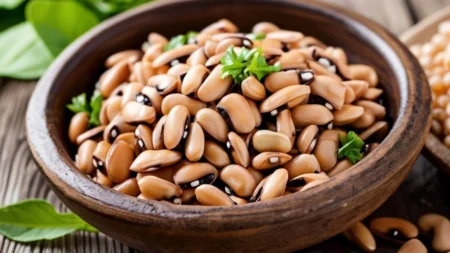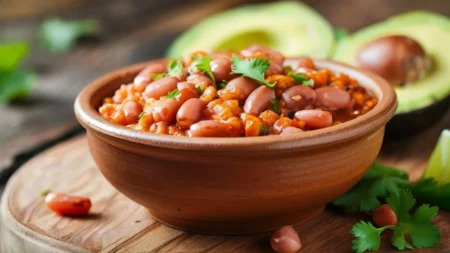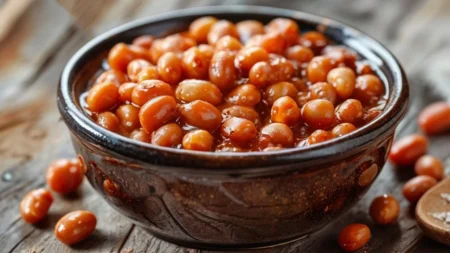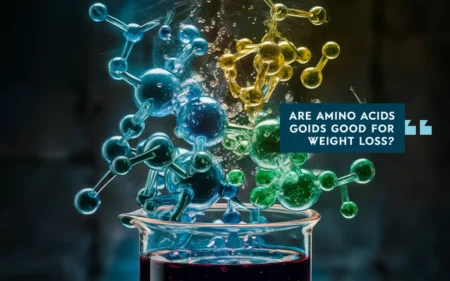Brown adipose tissue, or brown fat, is a special fat type. It helps our bodies keep a steady temperature and use up energy.1 Unlike white fat, which stores extra calories, brown fat generates heat. This happens through a special process called thermogenesis. Because of this, scientists see brown fat as a promising way to fight obesity and its related health problems.
Scientists found a lot of brite/beige cells in white fat. This may help us lose weight and burn more energy.2 When researchers learned how brown fat creates heat, they got really interested. They think they can develop new treatments by focusing on brown fat. These treatments could help with obesity and its effects on our health.
Key Takeaways
- Brown adipose tissue (BAT) is a specialized type of fat that can generate heat through thermogenesis.
- BAT has the potential to be a target for the treatment of obesity and related metabolic disorders.
- Brite/beige adipocytes in white adipose tissue suggest the possibility of inducing weight loss and increasing energy expenditure.
- Researchers are exploring the use of pharmacological agents, such as β3-adrenergic agonists, to selectively activate BAT and increase energy expenditure.
- Advances in imaging techniques, such as PET/CT, have provided valuable insights into the function and potential therapeutic applications of BAT.

Introduction to Brown Adipose Tissue
Brown adipose tissue, or BAT, is a special kind of fat. It’s crucial for managing our body heat and how we use energy.3 Unlike regular fat that stores energy, BAT burns calories and creates heat through a process called thermogenesis.3
What is Brown Adipose Tissue (BAT)?
BAT is an active fat that has a lot of mitochondria.3 Mitochondria are like power plants in cells. They change energy into heat, helping to keep our body warm, especially when it’s cold outside.3
Historical Perspective: From Infancy to Adulthood
For a while, scientists thought only babies and small animals had a lot of brown fat. It was important for them to stay warm.4 But now, thanks to better technology, we know adults have it too. Although as we grow older, we have less brown fat than when we were younger.4
Distinguishing BAT from White Adipose Tissue
Brown fat is very different from white fat. White fat stores our extra energy, but brown fat works on making heat. It has lots of mitochondria and a special protein, UCP1, that turns energy into heat. This special ability makes brown fat an important part of how our metabolism works.
The Thermogenic Potential of Brown Adipose Tissue
Brown adipose tissue stays warm due to a special protein called UCP1. This protein helps produce heat directly from the energy in our food. What’s unique is that this tissue can make more heat than other parts of our body.5
Cold Exposure and BAT Activation
Being in the cold activates our brown adipose tissue. That happens because our bodies react to temperature drops. The nerve system releases norepinephrine to turn on the heat-making process in BAT. This helps us make more heat and spend more energy to stay warm inside.6
Metabolic Benefits of Brown Adipose Tissue
Brown adipose tissue (BAT) is key for using energy and managing weight because of how it generates heat. It turns energy into heat, boosting the body’s metabolism. This helps in burning more calories and could help with losing or avoiding weight gain. So, BAT is important for finding ways to fight obesity and increase metabolism7.
Moreover, BAT affects how the body handles glucose and fats. It can use up more glucose and break down fats better, which helps improve insulin sensitivity and general metabolic health8. This indicates that BAT might be crucial in dealing with type 2 diabetes and high cholesterol.
Brown Adipose Tissue and Obesity
Brown adipose tissue (BAT) offers hope in fighting obesity. But, studies show that its role can be less effective in obese people. This happens because of long-term inflammation, stress, and changes in the body’s nervous system.9 These issues make BAT lose its ability to burn fat as heat.
It’s critical to figure out why BAT doesn’t work well in obesity. This knowledge is key to finding ways to use BAT better.
Strategies to Enhance BAT Thermogenesis
Researchers are looking into several methods to boost BAT’s ability to burn fat. These efforts involve using certain drugs that target BAT directly. They also look at how things like cold weather and exercise can help make BAT more active.6
Combining these different methods might help improve the health of obese individuals.
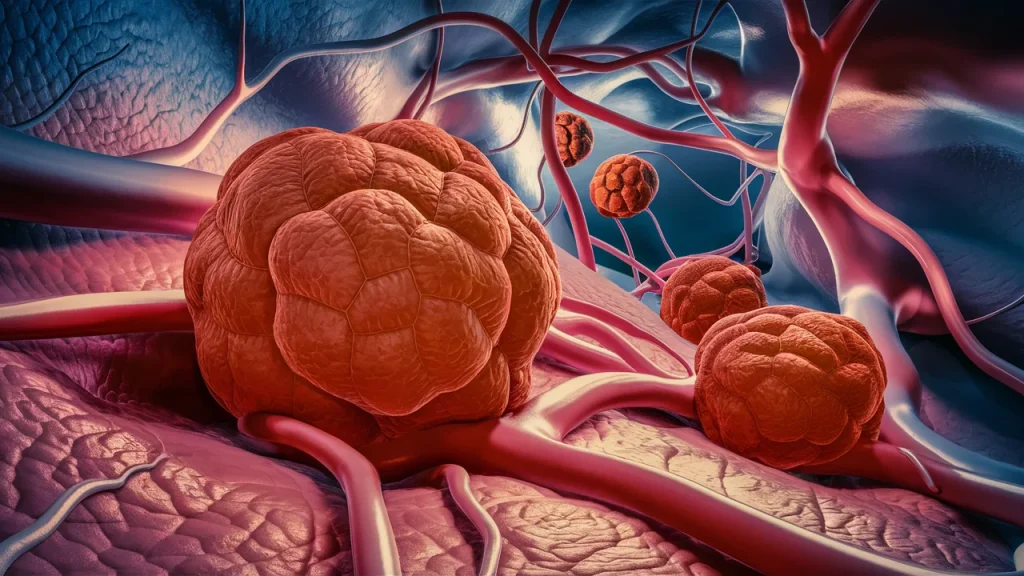
| Study | Findings | Citation |
|---|---|---|
| Afshin A et al., 2017 | Focused on the health effects of overweight and obesity in 195 countries over 25 years | 6 |
| Keaver L et al., 2013 | Applied the UK foresight obesity model in Ireland to analyze the health and economic consequences of projected obesity trends | 6 |
| Wadden TA et al., 2011 | Conducted a two-year randomized trial of obesity treatment in primary care practice | 6 |
| Saito M et al., 2009 | Found a high incidence of metabolically active brown adipose tissue in healthy adult humans, affected by cold exposure and adiposity | 6 |
| Quan LH et al., 2020 | Showcased that myristoleic acid produced by enterococci reduces obesity through brown adipose tissue activation | 6 |
brown adipose tissue and Its Endocrine Functions
Brown adipose tissue (BAT) isn’t just about keeping us warm. It acts like a hormone-producing organ, too. It releases hormones and molecules called adipokines.10 These can impact the whole body. They affect how we use sugar and fat, fight inflammation, and even how we think.
BAT works with many parts of our body, not alone.11 It talks to the brain, muscles, and liver. This team effort keeps our metabolism and energy balanced. Learning about these connections is key for using BAT to help us get healthier.
Adipokine Secretion and Systemic Effects
The main job of BAT’s endocrine system is making adipokines. These special molecules can change how our bodies work. They help manage sugar and fat, fight inflammation, and affect thinking.10 Knowing how these parts work together can open new doors to use BAT to treat health issues.
Interactions with Other Organs and Tissues
Brown fat isn’t on its own. It talks with many parts of our body.11 This teamwork keeps our energy and metabolism working well. Understanding these connections helps us create better health strategies.
The work BAT does with hormones underlines its big role in our health.12 Studying BAT helps find new ways to treat health problems. This could make managing health issues like diabetes better.
Age-Related Changes in Brown Adipose Tissue
Brown adipose tissue (BAT) faces challenges as we age. Its activity and amount decrease over time.13 This means we’re less able to make heat and burn calories as we get older.14 As a result, older people find it easier to gain weight and face health issues.
Decline in BAT Activity with Age
Research shows that BAT and beige fat decrease with age. These are essential for keeping us warm through non-shivering thermogenesis.14 Changes start to show in middle age. We see more visceral fat and less fat under the skin.14 This shift leads to problems like insulin resistance, heart disease, and diabetes.14
Potential for Rejuvenation and Restoration
Despite the decline in BAT’s function with age, there’s some hope. Research indicates we might be able to improve BAT’s role.14 Methods like medicines, lifestyle changes, and even transplants are under study. They aim to make older adults’ metabolisms better by enhancing their BAT.14
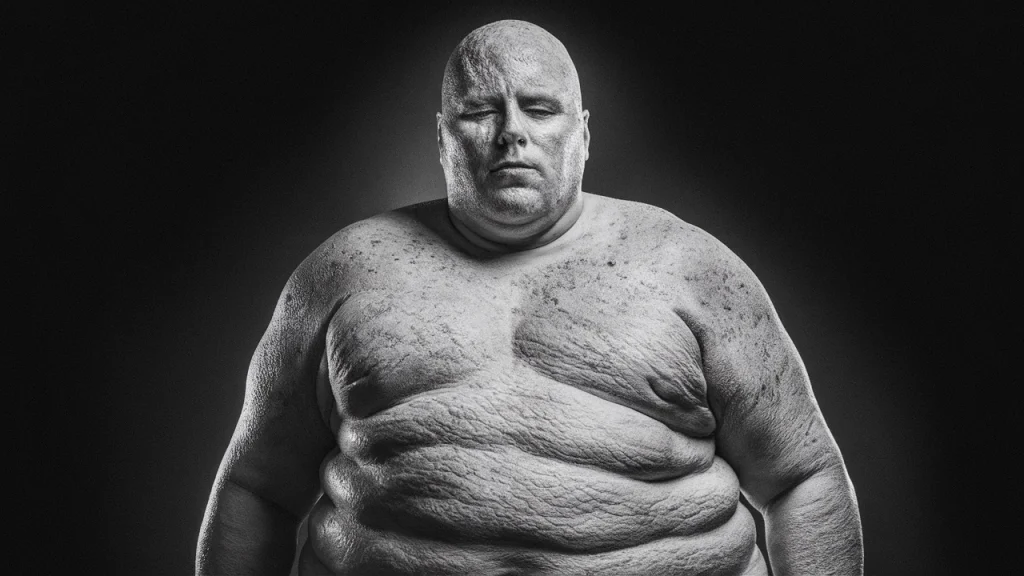
Therapeutic Implications and Drug Development
The discovery of brown adipose tissue has really caught researchers’ attention. They’re looking into ways to use this fat for fighting obesity and its related health problems. One approach is to use drugs like β3-adrenergic agonists to boost BAT’s work. This might help with weight loss and getting health metrics under control.15
Targeting BAT for Weight Loss and Metabolic Disorders
Using brown adipose tissue (BAT) for health treatment looks very promising. Its ability to produce heat can greatly help with managing weight and metabolic health. By turning up BAT’s heat power, scientists hope to increase the body’s energy use. This could be a line of defense against obesity, type 2 diabetes, and unhealthy blood fats.156
Challenges and Considerations in Drug Development
Despite the promising route of using BAT for health, there are hurdles in developing drugs. Making sure these drugs are safe and work only where needed is a big challenge. Also, our BAT doesn’t work as well as we age, marking another issue. However, efforts to find BAT-focused treatments continue. These could one day help in the fight against obesity and its metabolic effects.6
Imaging Techniques for Studying Brown Adipose Tissue
Imaging technologies have become key in studying brown adipose tissue (BAT). Positron Emission Tomography (PET) and Computed Tomography (CT) allow us to see and measure BAT activity in both animals and humans. By tracking BAT’s metabolic activity, we learn more about how it works and its possible medical uses.16
Positron Emission Tomography (PET) and Computed Tomography (CT)
PET/CT imaging has really changed how we study BAT.17 18F-FDG-PET/CT is often used to see active BAT. Yet, it can’t show BAT that’s not stimulated.17 Researchers use specific PET tracers to check both the activation and mass of BAT.17 Some tracers show real promise in measuring BAT mass accurately.17
Emerging Technologies for BAT Visualization
Besides PET/CT, there’s work on new ways to see and measure BAT. This includes new tracers, MRI, and infrared thermography.17 The goal is to keep advancing imaging to better understand BAT and its role in health and illness.16
FAQ
What is brown adipose tissue (BAT)?
Brown adipose tissue (BAT), or brown fat, helps regulate body temperature and energy use. Unlike white fat, which stores extra calories, BAT generates heat through thermogenesis.
How does brown adipose tissue differ from white adipose tissue?
BAT is different from WAT. While white fat stores energy, brown fat can make heat. It has lots of mitochondria and a special protein, UCP1. This helps it turn energy into heat.
What is the key to the thermogenic capacity of brown adipose tissue?
The secret behind BAT’s ability to make heat is UCP1 in its mitochondria. UCP1 separates making ATP from making heat, letting BAT turn food energy into heat.
How does cold exposure activate brown adipose tissue?
Cold temps kickstart BAT. Your body feels cold, signaling your nervous system. This causes norepinephrine to release and activate BAT to make heat.
What are the metabolic benefits of brown adipose tissue?
BAT is key for burning energy and managing weight by making heat. It speeds up how your body burns calories, which might help with weight loss. It also helps with how your body handles sugar and fats, making you more insulin sensitive and healthier overall.
How does obesity impact the function of brown adipose tissue?
Obesity hurts BAT’s job. It can become less effective due to issues like inflammation, oxidative stress, and changes in the nervous system. This can make BAT less able to make heat.
What strategies are being explored to enhance the thermogenic capacity of brown adipose tissue?
To help BAT work better in obesity, researchers are looking at different methods. These include drugs that target BAT, like β3-adrenergic agonists, as well as cold and exercise to boost BAT’s activity.
What is the role of brown adipose tissue as an endocrine organ?
BAT is not just for heat. It also acts like an organ, making hormones and signaling molecules. These can impact how other parts of your body work, like handling sugar and fats, reducing inflammation, and even brain function.
How does the age-related decline in brown adipose tissue activity affect metabolic health?
As we get older, BAT can’t make as much heat. This can lead to burning fewer calories. The drop in BAT’s function might play a role in older people gaining weight and facing more metabolic problems.
What are the challenges in developing therapeutic interventions targeting brown adipose tissue?
Making treatments that work on BAT has its own set of problems. It’s important to make sure these treatments are safe and specific. Plus, we need to figure out how to deal with BAT’s function decreasing as we age.
How have advancements in imaging technologies contributed to the study of brown adipose tissue?
Improvements in imaging, such as PET and CT, have been big for studying BAT. They let us see and measure how BAT works, giving us a better understanding of its role and how it could be used in therapy.
Source Links
- https://www.ncbi.nlm.nih.gov/pmc/articles/PMC10230949/
- https://www.ncbi.nlm.nih.gov/pmc/articles/PMC7068690/
- https://www.ncbi.nlm.nih.gov/pmc/articles/PMC3661118/
- https://www.ncbi.nlm.nih.gov/pmc/articles/PMC7330484/
- https://pubmed.ncbi.nlm.nih.gov/24717051/
- https://www.ncbi.nlm.nih.gov/pmc/articles/PMC9874101/
- https://www.nih.gov/news-events/nih-research-matters/how-brown-fat-improves-metabolism
- https://www.ncbi.nlm.nih.gov/pmc/articles/PMC10688976/
- https://www.ncbi.nlm.nih.gov/pmc/articles/PMC9009254/
- https://www.ncbi.nlm.nih.gov/pmc/articles/PMC4765227/
- https://link.springer.com/article/10.1007/s11154-021-09640-6
- https://www.degruyter.com/document/doi/10.1515/hmbci-2022-0044/html
- https://www.ncbi.nlm.nih.gov/pmc/articles/PMC6702504/
- https://www.nature.com/articles/s41419-022-04752-6
- https://www.ncbi.nlm.nih.gov/pmc/articles/PMC5425649/
- https://www.nature.com/articles/s41598-023-42537-9
- https://www.mdpi.com/1251520








